By Rick VanSickle
Ilya and Nadia Senchuk are shining a bright light on the most western reaches of Niagara Wine Country and wine lovers have certainly taken notice.
Before the Senchuks took a gamble on their farm in Winona, very few were even aware that grapes could thrive — yet alone rise above the fray — in an unproven terroir. The couple was undaunted and put all doubts to rest once the grapes were planted and the first wines began to emerge.
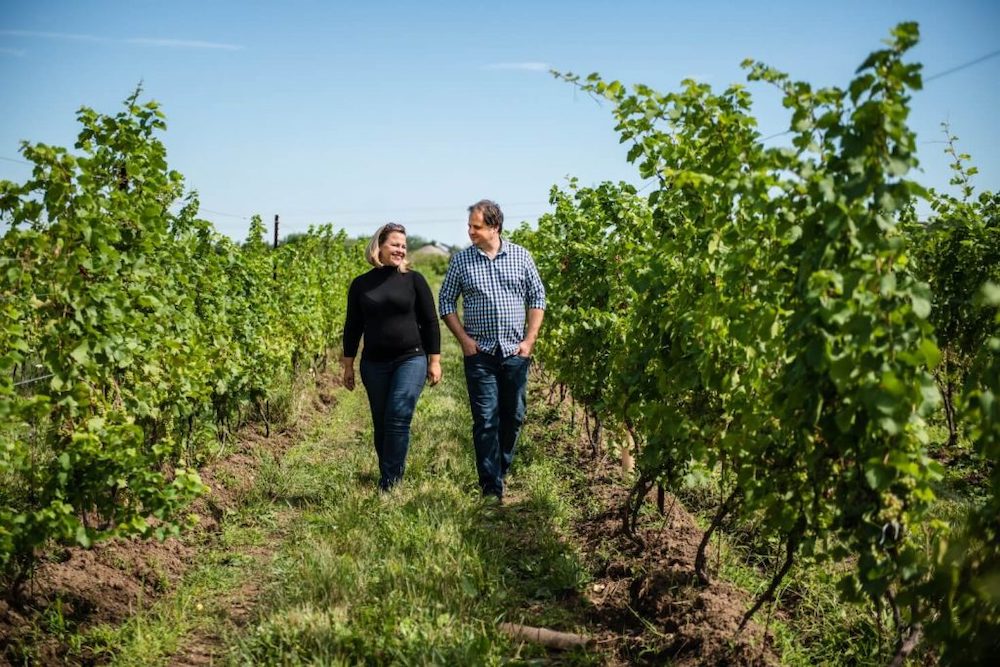
Leaning Post Wines began as a virtual label in 2009 and consumers began to take notice when Ilya sourced grapes from key vineyards and produced outstanding wines that quickly gained a following. Senchuk was already an accomplished winemaker. He created Leaning Post as a side hustle while working as the head winemaker at The Foreign Affair, where I first met him and was impressed with the appassimento style of wines he was creating there. I was even more smitten by his virtual brand.
In 2011, Ilya and Nadia, above in the Senchuk vineyard, purchased the Winona farm and the hard work of planting grapes with an unknown future, while still working for Foreign Affair and their own label, was just beginning. Along with planting grapes, the couple also built a winery, tasting room and retail facility that has seen additions and alterations every year since they started. The newest cool attraction at the winery is a back-vintage rack, below, for library wines that the Senchuks have uncovered from various nooks and crannies in the winery. These are mostly late vintage wines and offer a chance for consumers to grab fully mature wines that are just starting to hit their peak of performance. Did I mention they have also raised three children as they navigated the journey from virtual to full-full-fledged winery?
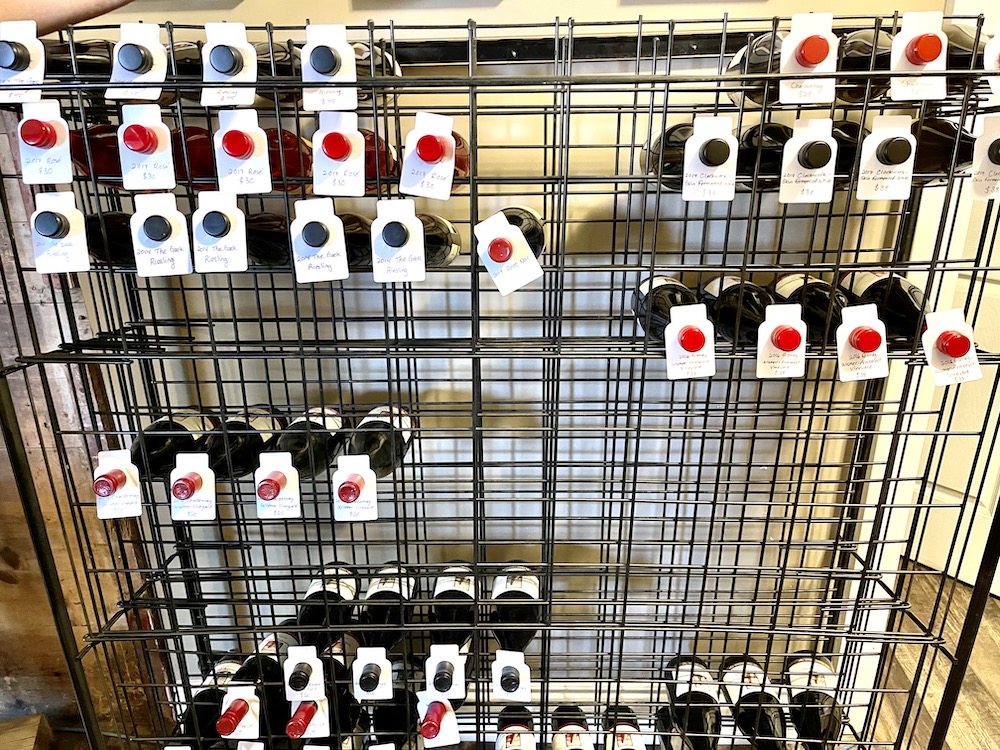
Theirs is a story of success; building on a reputation of making quality wines from top vineyards and then slowly integrating wines grown from grapes lovingly planted from scratch on their own property into the portfolio. The namesake single-vineyard Senchuk Vineyard wines now play a starring role at the estate, with the Pinot Noir and Chardonnay some of the finest Burgundian-style wines made anywhere in Niagara. The western frontier, with the replanted Grimsby Hillside Vineyard not far away, is in good hands to establish a unique and permanent place to grow terroir-driven grapes and craft stunning wines that have a sense of place and belonging.
It has been a personal pleasure of mine to watch the Leaning Post brand grow from a virtual brand to where it is today. Each tasting has provided something new, something different as Ilya and his team have never shied away from a challenge and have always managed to stay relevant with not only classic, well-made Chardonnays, Pinots and Rieslings, but also the more experimental, low-intervention and natural wines, including pet-nats, skin fermented whites, piquettes, and popular Riesling concoction he calls his “solara-lees aged” wine.
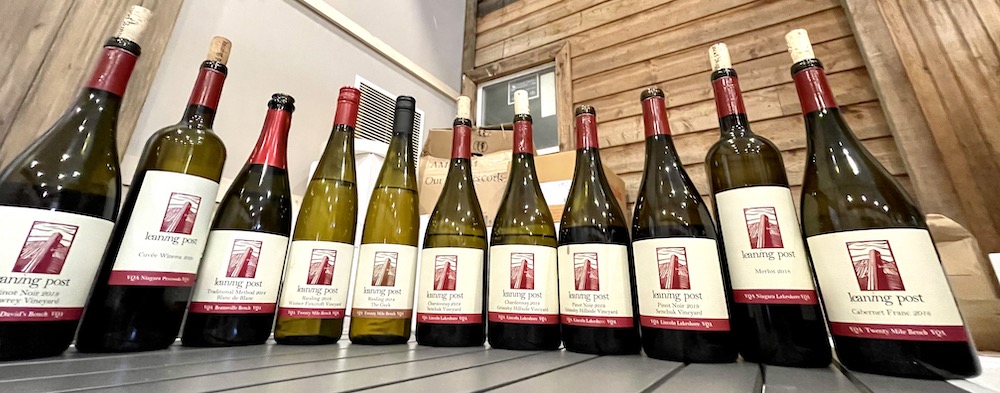
I spent an afternoon tasting with Ilya and assistant winemaker Ace Ferris (pictured with Ilya in the very top photo), a graduate of the Niagara College wine and viticulture program, who embraces and enhances the various offerings in the Leaning Post portfolio. We tasted through a range of new wines, nearly sold-out wines, and library wines for a complete perspective of the wines now being made at this flourishing Niagara winery.
Here’s what I liked from the tasting:
The bubble
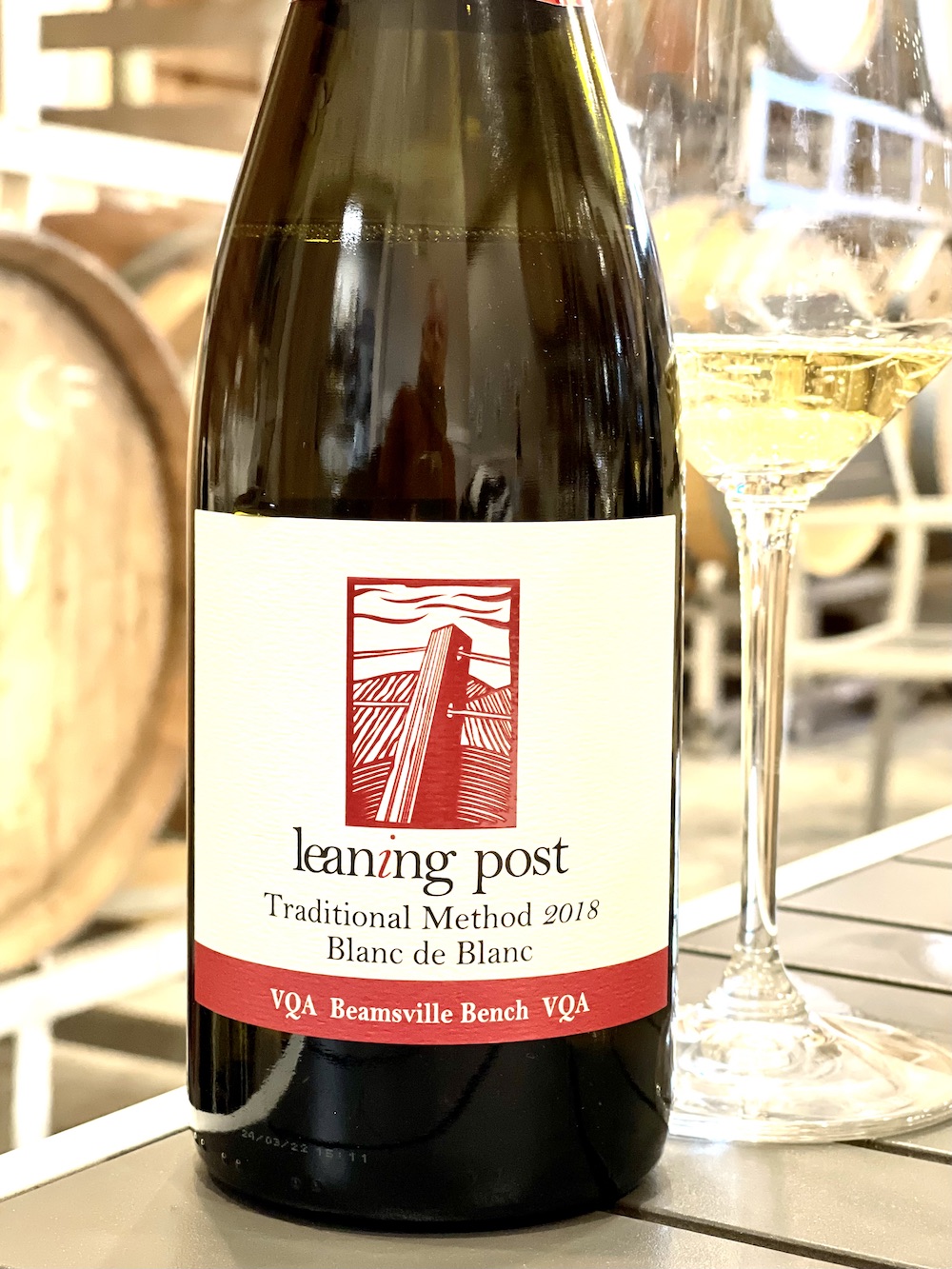
Leaning Post Traditional Method Sparkling Blanc de Blanc 2018 ($55, 93 points) — This second traditionally made bubby from Senchuk is sourced from 40-year-old Chardonnay vines on the Beamsville Bench. The base wine was barrel fermented and aged for six months, spent 36 months on the lees and was aged in the bottle for a further four months. A modest, 2 g/l dosage was added. The nose shows flint, lemon biscuit, pear, a lovely floral note, and a robust bead in the glass. It’s bright and fresh on the palate with a more elegant bubble with lemon cream, pear, flinty/smoky notes, toasty brioche, apple, flinty minerality and a vibrant echoing finish. Would be fun to watch where the tertiary notes will go with a bit of time in the cellar.
The white wines
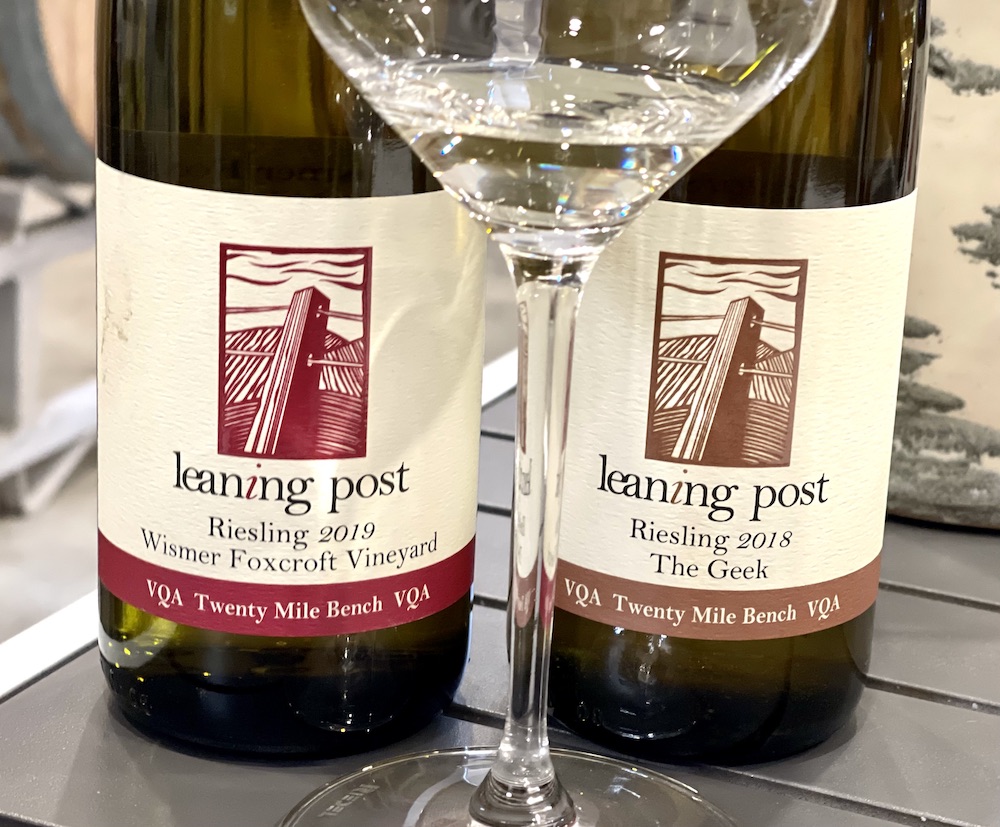
Leaning Post The Geek Riesling 2018 ($35, 91 points) — The first vintage of this unique Riesling was made in 2014, crafted from aging the juice on the lees of every white wine made in that vintage. With this fifth vintage, the tank gets bigger, but the production volume stays about the same. Hand-picked and hand sorted grapes were gently whole cluster pressed. It was treated the same as the regular Riesling for the first two thirds of fermentation, but Senchuk draws off a portion of the wine when he stops the fermentation and allows the Geek to ferment to dryness in a separate tank. As fermentations from other white wines (Riesling, Chardonnays, Sauvignon Blanc) were completed, the lees from those fermentations were added to this wine. All the lees from the 2014, 2015, 2016 and 2017 vintages of this wine were added July 29, 2019. Then after 22 months on lees, the wine was racked and bottled unfined and unfiltered. “Our solera-lees system will continue into future vintages until we can answer the question everyone has been asking; how much lees is too much lees? Only the Geek knows,” says Senchuk. This is made in as close to a natural form as Senchuk wants to get with this wine. A bit of sulphur is added at bottling. He calls it “low intervention, not no intervention.” I’ll say this, it’s unlike any other Riesling made in Niagara. It shows a deep, golden colour in the glass with an earthy/savoury nose of marmalade, lemon chiffon, mature apple notes and flinty minerality. It’s deep and has a rustic, savoury, creamy feel on the palate with muddled citrus notes, bin apples, foraged pears, gunflint, and earthy accents with electrifying acidity driving the back end. “We just let it do its thing,” Senchuk says. “It’s definitely a lees experiment.” This will be long-lived in your cellar, say 7+ years. Go ahead, geek out, people!
Leaning Post Wismer-Foxcroft Vineyard Riesling 2019 ($25, 92 points) — The more traditional Riesling is a fine example of Twenty Mile Bench terroir with a floral/flinty nose, gushing lime zest, green apple, pear, and a subtle ginger note. It has gorgeous texture, zippy lime, ripe pear, apricots, and ginger with a vibrant, clean finish.
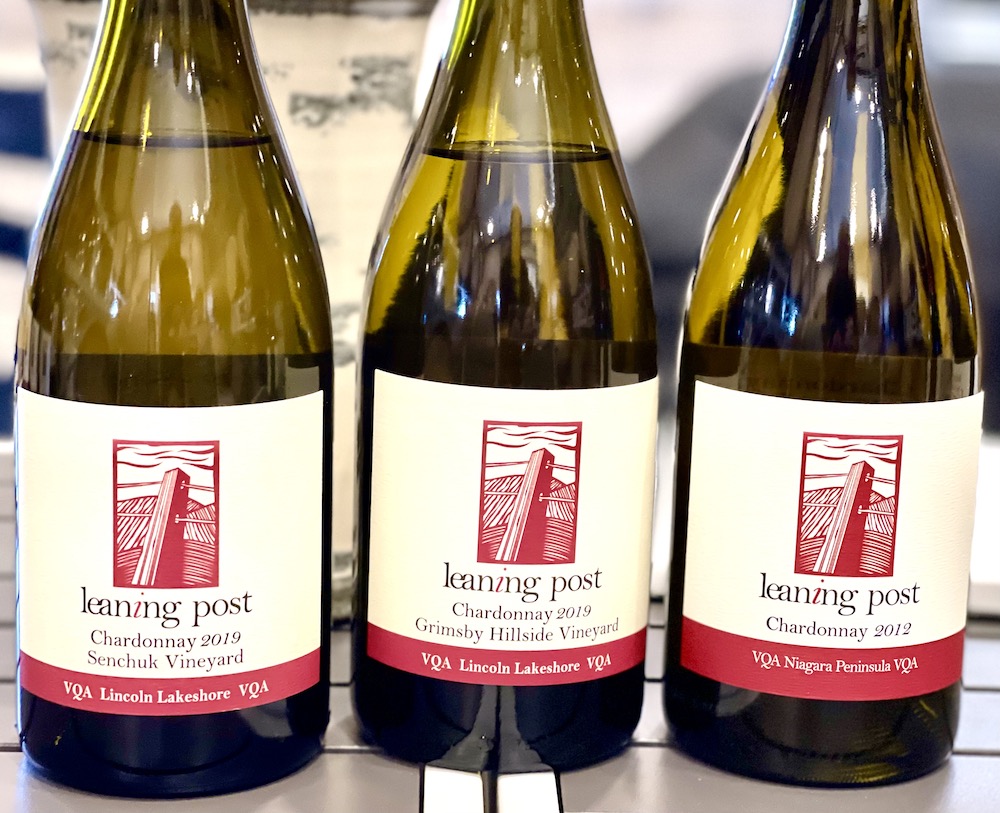
Leaning Post Wismer-Foxcroft Chardonnay 2012 (only for wine club members, but what is leftover will go to the new back vintage rack in the retail room, 92 points) — This was one of the first wines I ever reviewed from what was then the fledgling Leaning Post winery. What a treat to retry it all these years later. Though it didn’t say so on the bottle, the fruit was sourced from Wismer-Foxcroft Vineyard, two rows away from where Thomas Bachelder sources his fruit, and four rows down from where Kevin Panakapka (2027 Cellars) got his back then. Primary fermentation (almost 6 weeks) took place in barrel, followed by full malo fermentation. Once fermentations were completed, the wine remained in French oak barrique (35% new, 65% 4-year-old barrels) for 12 months. This is a contemplative Chard with a mélange of ripe pear, citrus and spice against a background of limestone minerality. It has some weight on the palate, with ripe fruit in tandem with butterscotch cream, minerality and a long, smooth finish. Senchuk has embraced the warmth of the season but found balance with the acidity. On retrying this wine, I was surprised at how well it has aged, considering the warmth of the vintage. It’s much more voluptuous and creamier with baked pear/apple notes, richer spices, toasty vanilla, and caramel notes. It’s highly concentrated and integrated but the acidity is holding on nicely.
Leaning Post Grimsby Hillside Vineyard Chardonnay 2019 ($40, 93 points) — This is the first Grimsby Hillside Chardonnay made by Leaning Post, which is only located only 800 metres from Leaning Post. It’s sourced from the Frontier Block, where some of Niagara’s top winemakers are now getting their Grimsby Hillside fruit. The grapes were whole cluster pressed and the juice was naturally settled, then racked into barrel where fermentation occurred by indigenous yeast and malolactic bacteria. Once fermentations were completed, the wine remained in French oak barriques (mostly all used) and 500-Litre puncheon without stirring of the lees for 15 months. This wine was lightly filtered and bottled. A beautiful saline-rich and fresh nose with pear, lemon curd, flint, bergamot and toasted oak spices. There is a creamy texture on the palate, chalky/stony notes, golden apple, rich pear, and beautifully integrated oak spice notes with electric acidity on the finessed finish.
Leaning Post Senchuk Vineyard Chardonnay 2019 ($50, 95 points) — A fascinating comparison to the wine above, as mentioned, only 800 metres away, and a far different expression. It spends 15 months in French oak, 35% new wood and the fruit is wild fermented and undergoes wild malo. There is uncanny florality on the nose of this wine, like a meadow of white blossoms and honeysuckle. It’s pretty, delicate and saline with underlying quince, pear, peach, lemon curd and soft oak spice notes. It’s rich, deeper, and more concentrated on the palate with enticing chalky/saline notes, ripe pear, lemon cream, peach tart, integrated spices, and a creamy texture that all leads to a luxurious and long finish with finesse and flair. A thing of beauty that will reward with time in the cellar for 5+ years.
The red wines
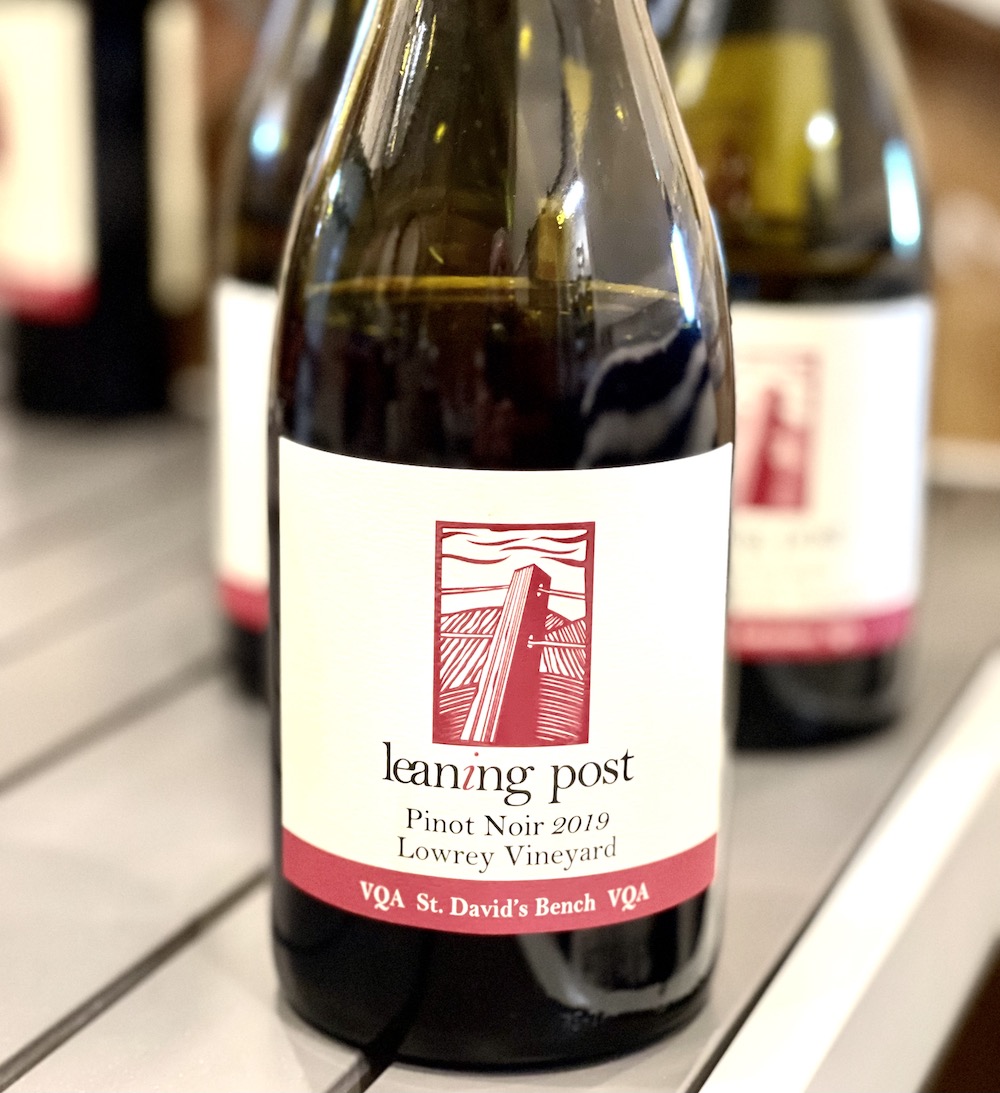
Leaning Post Lowrey Vineyard Pinot Noir 2019 ($60, 93 points) — Sadly, this is the last vintage of the Lowrey Vineyard from Leaning Post, one of five winemakers who make this St. David’s Bench treasure every year, but says Senchuk, “it’s a lovely vintage to go out with.” It shows a light burgundy colour in the glass with a pretty nose of violets, dried tobacco, brambly red berries, red currants, and earthy/spicy notes. The tannins have some grip on the palate with savoury wild raspberries, dark cherries, beet root, anise, earthy notes, light toasty spices and vibrance though a long, clingy, and lifted finish. Can cellar 7+ years.
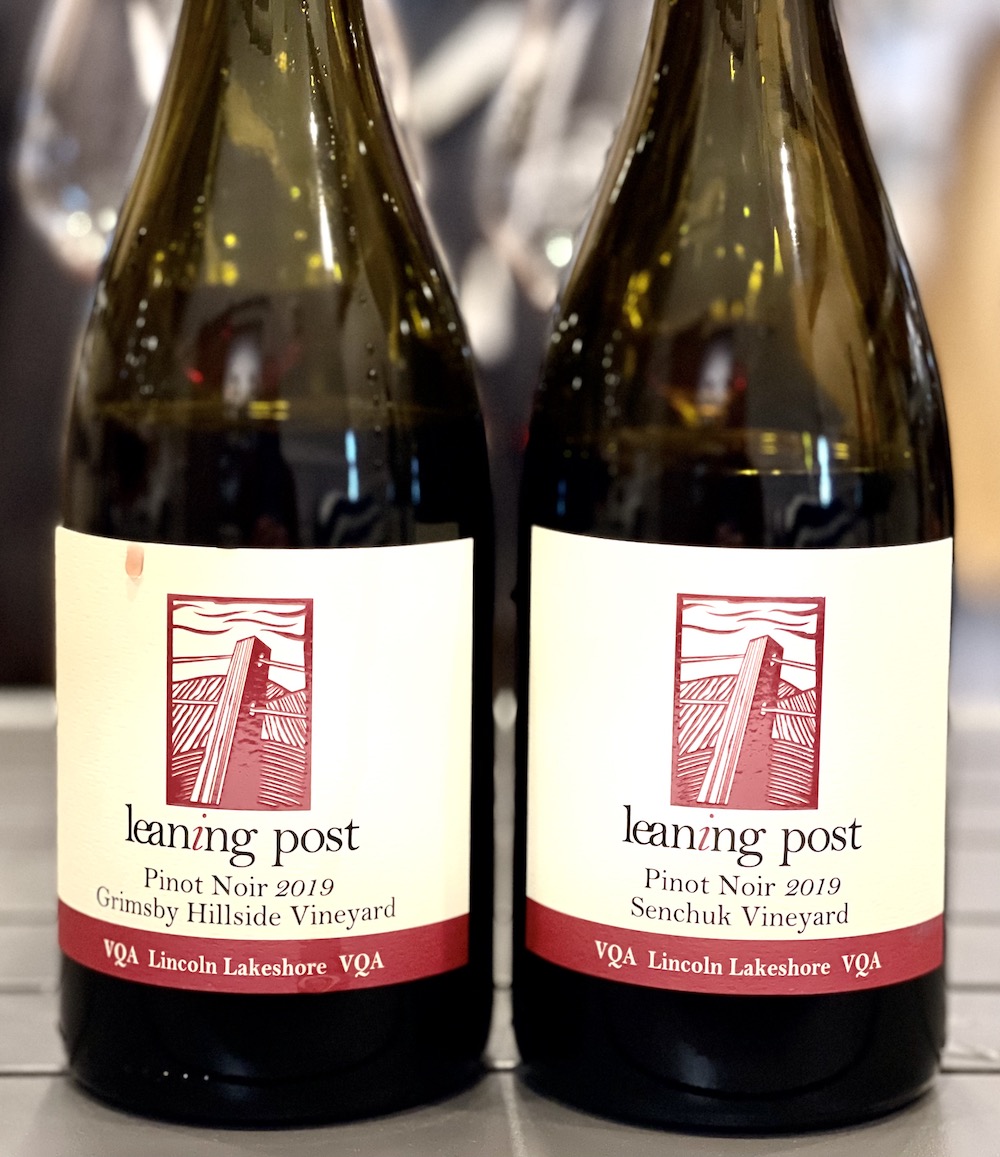
Leaning Post Grimsby Hillside Vineyard Pinot Noir 2019 ($55, only two cases remaining, 93 points) — This Pinot from just down and across the road from the estate is the first vintage from Grimsby Hillside Vineyard. The vineyard, says Senchuk, is perfectly suited to Pinot Noir and combined with mature (15-year-old) vines, creates wines of “elegance, power and age worthiness.” It has a highly perfumed nose of meaty wild red berries, forest floor, spice, bloody/iron minerality notes and light spice. There is some tannic structure with ripe black raspberries, dark cherries, crunchy cranberries, a touch of mocha and spice, lovely texture and a vibrant, lifted finish. Can cellar 7+ years.
Leaning Post Senchuk Vineyard Pinot Noir 2019 ($70, 94 points) — As a champion of the furthest west border of Niagara, Senchuk has firmly established his very own terroir as top dog at the estate. And it starts with his two Burgundian grapes — the Chardonnay (reviewed above) and this Pinot Noir. The Senchuks had no clue what their land would yield when they purchased the property. It took four years to find out what they had and two or three vintages after that before they knew they found something REALLY special. This Pinot exemplifies what the Senchuk Vineyard is all about, a unique expression that is dense, structured, and built to last. The woodsy/earthy nose yields to savoury red berries with swirling, then forest floor, anise, charred cedar, and elegant, expressive spice notes. It’s tightly wound on the palate with firm tannic structure that will soften in time (or decant now) to reveal the melange of dark cherries, wild raspberries, beet root, fine oak spices, earthy notes, and anise. The finish is long and lifted from the mouth-watering acidity. Can cellar 10+ years, in my opinion.

Note: $3 from every bottle of Leaning Post’s 2020 Pinot Noir purchased directly from the winery will go to humanitarian aid in Ukraine this holiday season. The program runs until Ukrainian Christmas on Jan. 7. As the war continues, the need continues to grow for many items, the most critical right now are generators. The Senchuks, who are Ukrainian, will be purchasing generators and sending them to Ukraine. Any money left over from the generator purchases will go to the Canada Ukraine Foundation. Wines In Niagara did not taste the 2020 vintage.
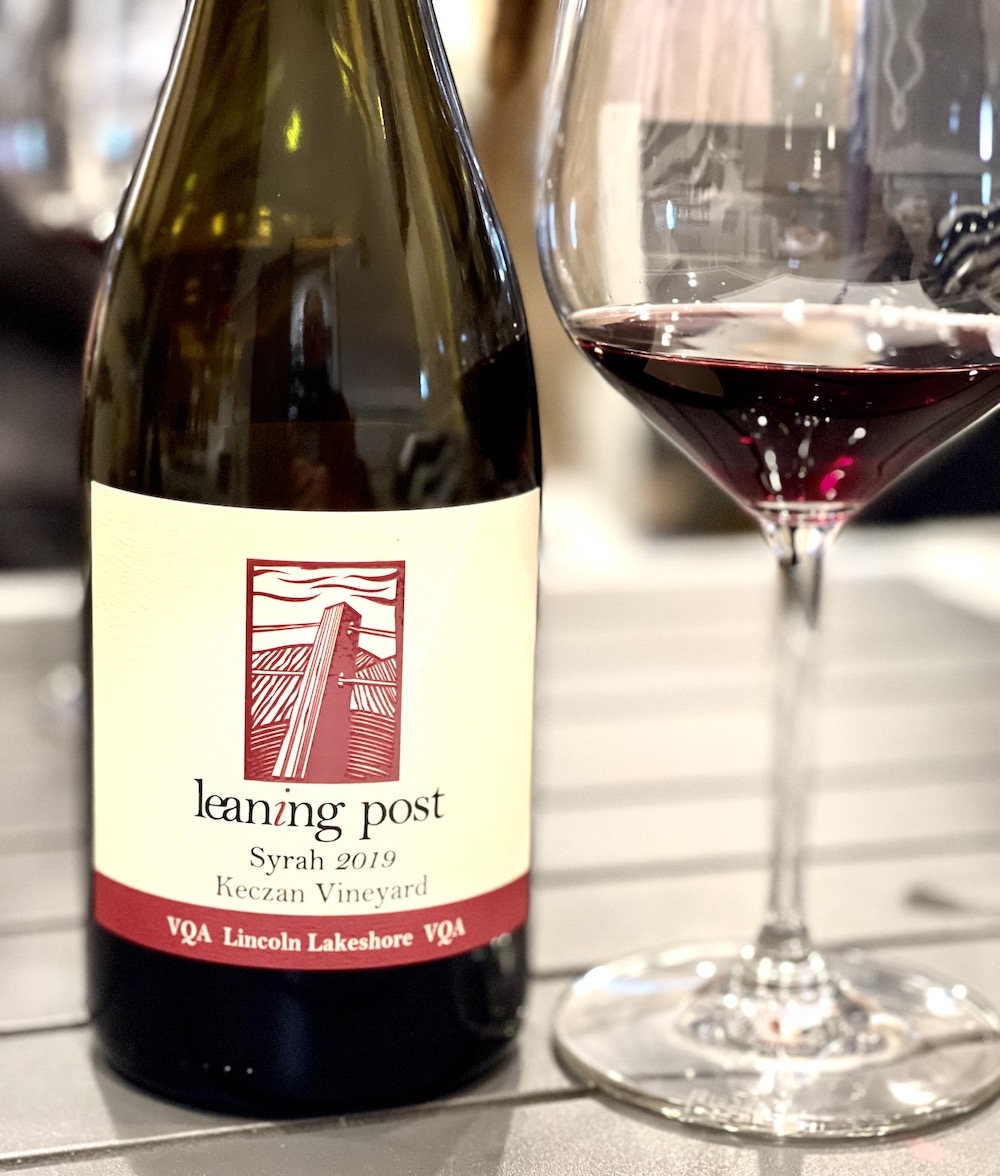
Leaning Post Keczan Vineyard Syrah 2019 ($55, 90 points) — Senchuk has sourced this Syrah from the Keczan Vineyard in the Lincoln Lakeshore sub-appellation, just north of Old Highway 8, since the 2012 vintage. It has a meaty/peppery nose of ripe red berries, cassis, plums, oak spices, and a lovely floral thing going on. It’s more fruit-driven on the palate with a melange of brambly red berries, cassis, spice, black peppercorns, medium+ tannins and a tangy, vibrant finish. Can cellar 5+ years.
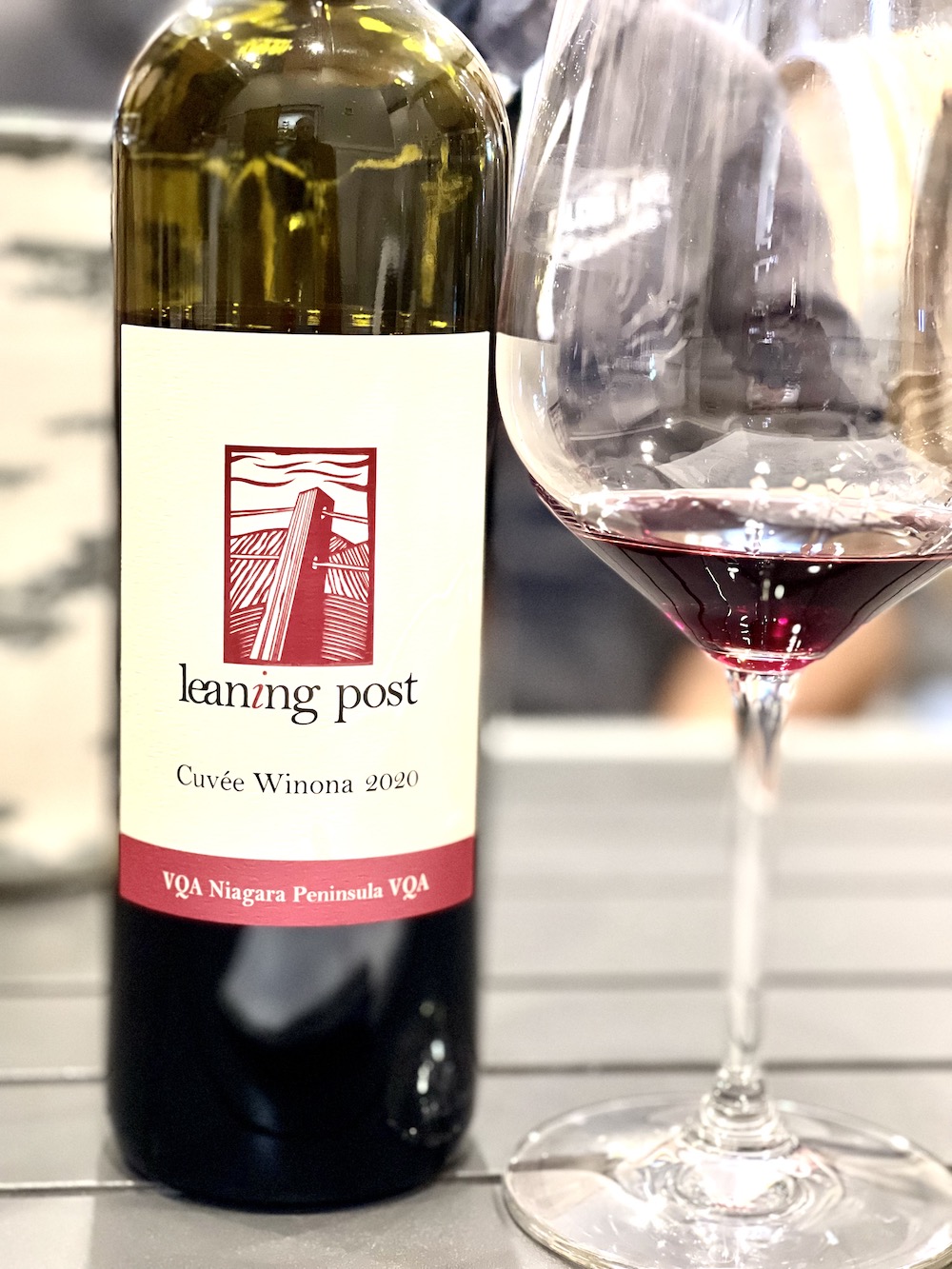
Leaning Post Cuvée Winona 2020 ($29, winery now, and Vintages stores in March, 91 points) — This is a blend of 61% Merlot and 39% Cabernet Franc all sourced from Niagara-on-the-Lake that spent 18 months in French oak (mostly used barrels). Interestingly, the Cab Franc portion was fermented in concrete with the rest fermented in stainless steel. It has a big, heady nose of dense black cherries, blackberries, black currants, rich barrel spice notes and subtle earthy/savoury accents. It’s bold and sassy on the palate with tannic grip and a firm structure with a range of dark berries, wild raspberries, licorice, eucalypt, fine oak spices, toasted vanilla bean, and a lifted, long finish. An impressive, bold red offering that can cellar 5+ years.
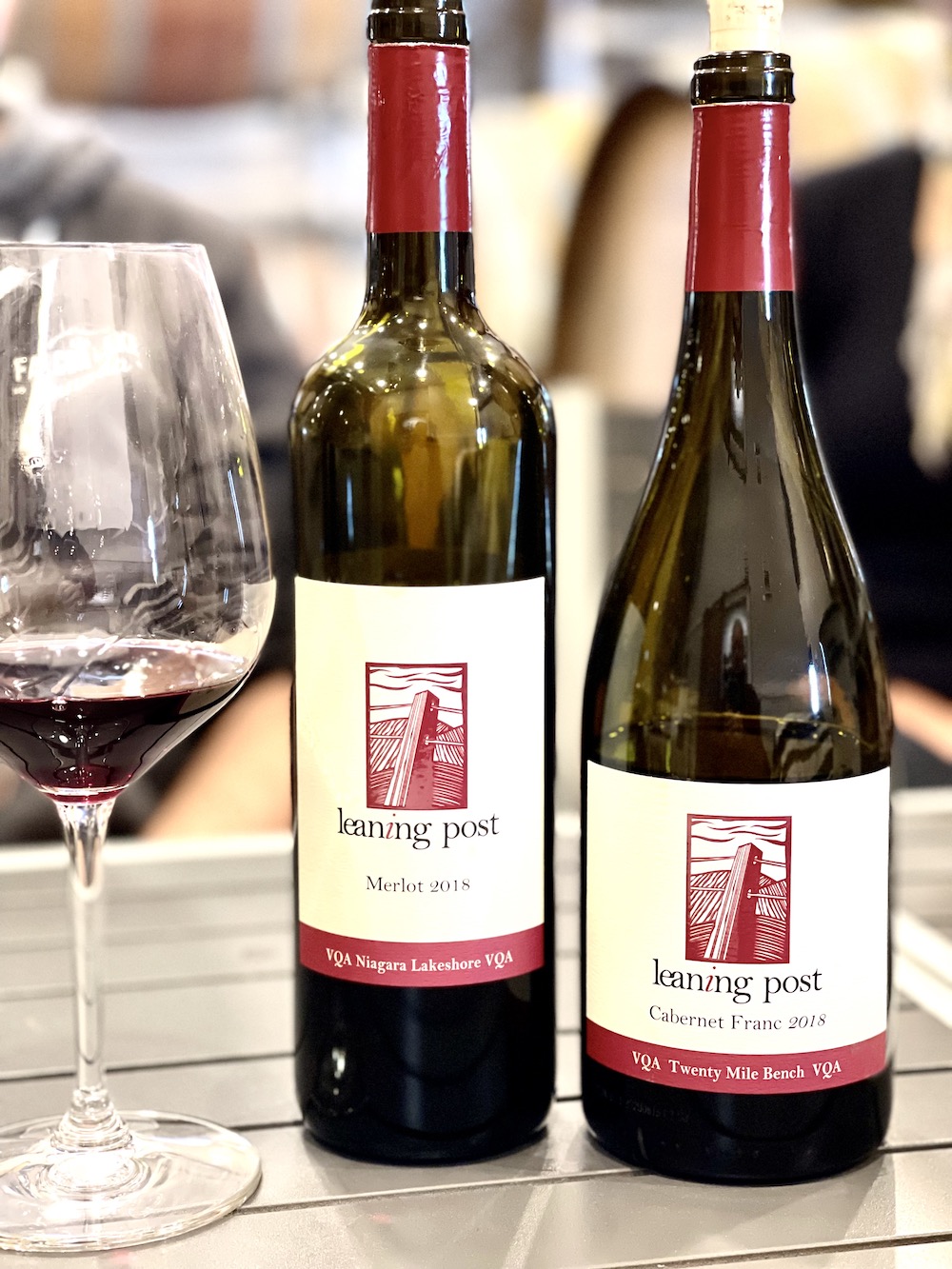
Leaning Post Merlot 2018 ($45, only a few cases left) – Senchuk pulled out a couple of other reds “just for kicks” to see how they are evolving. Both these wines are in short supply at the winery but offer a glimpse of where they are headed if you have some in your cellar. The Merlot has a jammy, black fruit laden nose with cocoa, mulberries, and bold spice notes. It’s dense on the palate with the full range of blackberries, cassis, anise and added tobacco, spice, evident tannins with plenty of zip on the finish. Can keep cellaring for a few more years.
Leaning Post Cabernet Franc 2018 ($45, very little left) – The fruit was sourced from the Wismer-Foxcroft Vineyard, and the nose shows a highly aromatic array of savoury red and dark fruits, dried tobacco, herbs, plums, and fine oak spices. It’s structured on the palate with grippy tannins and an open-knit style with the full range of concentrated and brambly red berries, plums, black currants, anise, smoky notes, earthy/savoury accents, and mouth-watering acidity driving the back end. Drinking fine right now but can still cellar a few more years.





Comment here